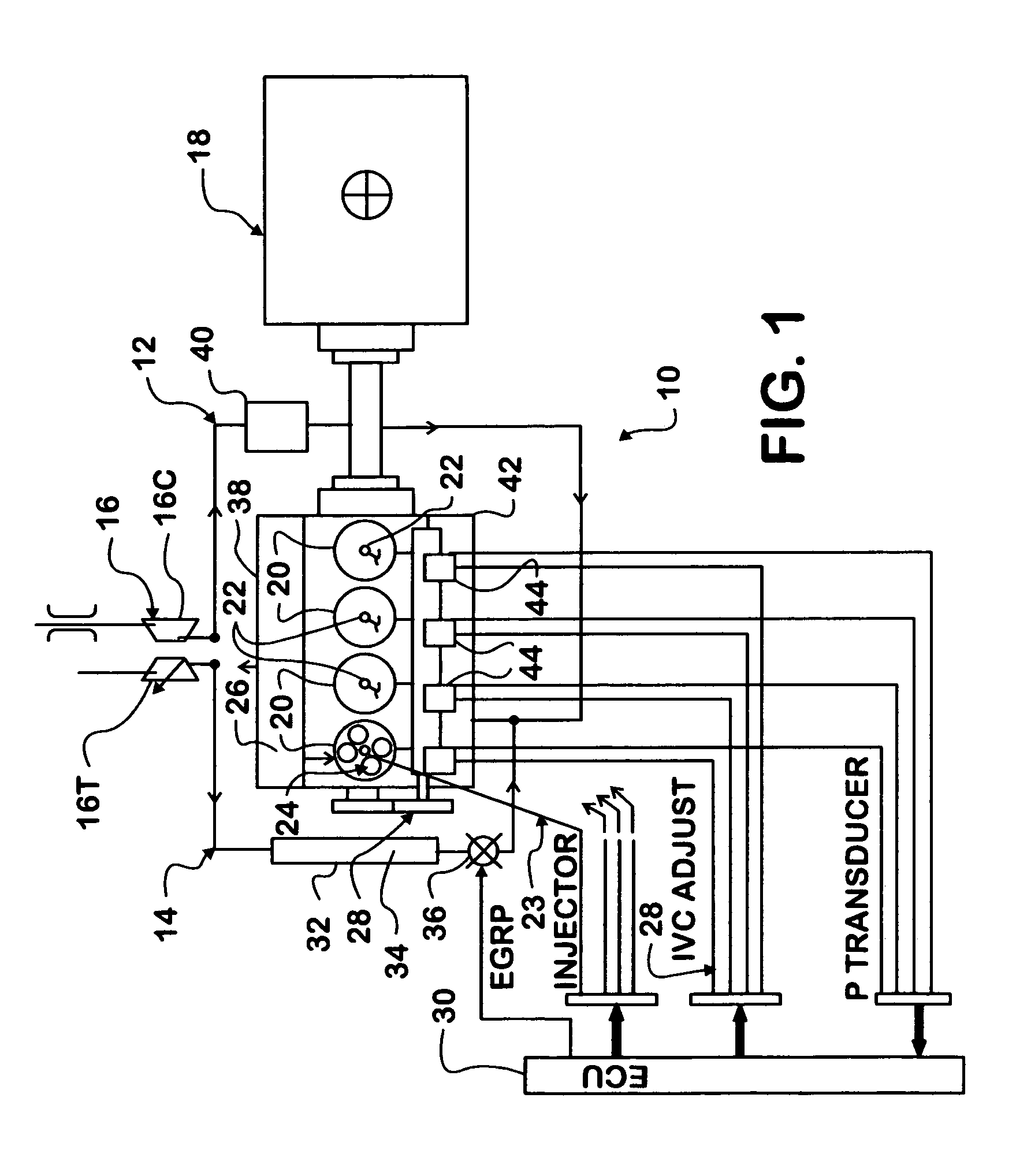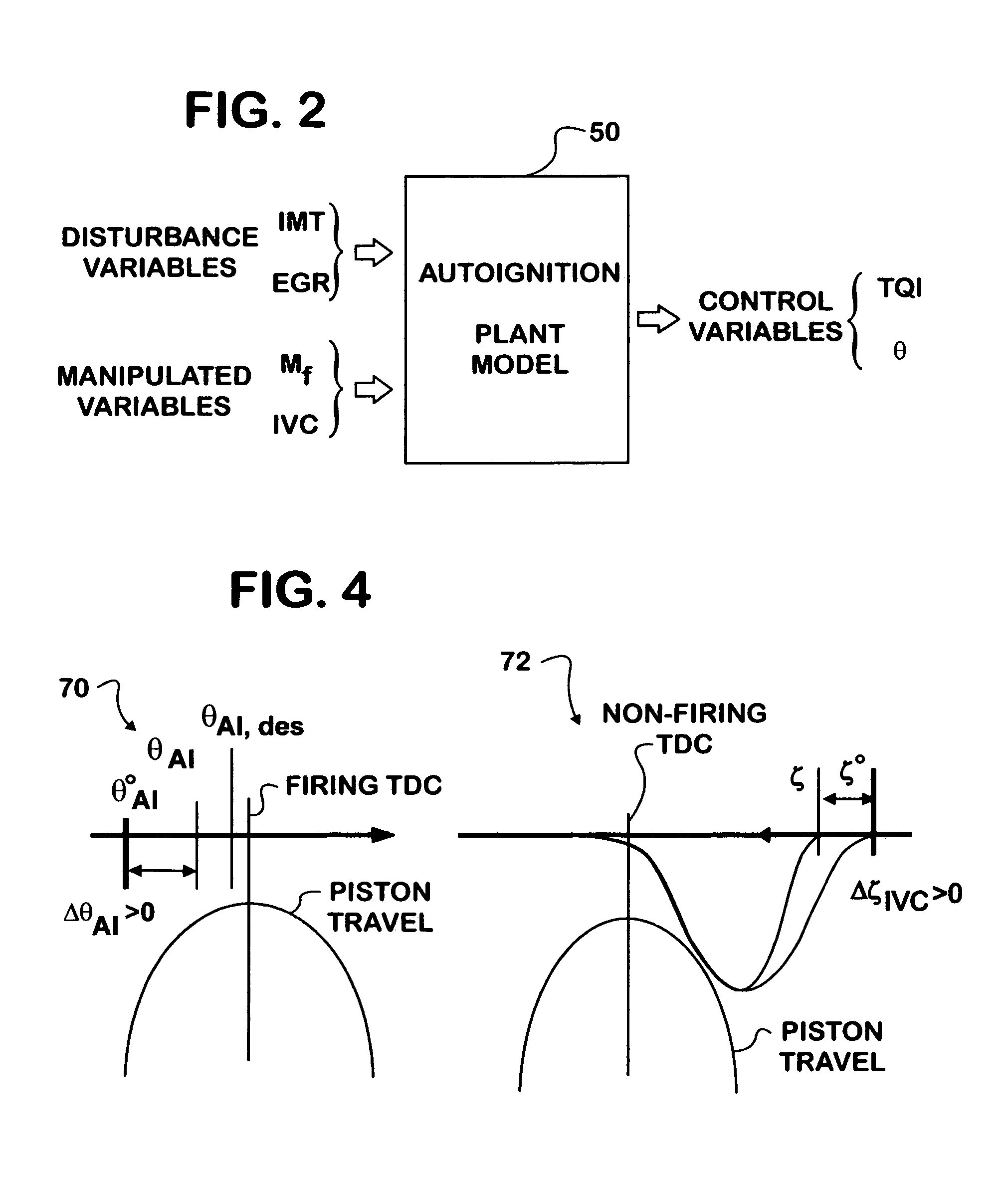Model-based controller for auto-ignition optimization in a diesel engine
- Summary
- Abstract
- Description
- Claims
- Application Information
AI Technical Summary
Benefits of technology
Problems solved by technology
Method used
Image
Examples
Embodiment Construction
[0039]FIG. 1 shows portions of an exemplary internal combustion engine 10 that embodies principles of the present invention. Engine 10 comprises an intake system 12 through which charge air for combustion enters the engine and an exhaust system 14 through which exhaust gases resulting from combustion exit the engine. Engine 10 operates on the principle of compression ignition, and is turbocharged by a turbocharger 16 that has a turbine 16T in exhaust system 14 and a compressor 16C in intake system 12. When used as the prime mover of a motor vehicle, such as a truck, engine 10 is coupled through a drivetrain 18 to driven wheels that propel the vehicle.
[0040]Engine 10 comprises multiple cylinders 20 (either in an in-line configuration of a V-configuration) forming combustion chambers into which fuel is injected by fuel injectors 22 as elements of a fuel management system 23 to mix with charge air that has entered through intake system 12. Pistons that reciprocate within cylinders 20 a...
PUM
 Login to View More
Login to View More Abstract
Description
Claims
Application Information
 Login to View More
Login to View More - R&D
- Intellectual Property
- Life Sciences
- Materials
- Tech Scout
- Unparalleled Data Quality
- Higher Quality Content
- 60% Fewer Hallucinations
Browse by: Latest US Patents, China's latest patents, Technical Efficacy Thesaurus, Application Domain, Technology Topic, Popular Technical Reports.
© 2025 PatSnap. All rights reserved.Legal|Privacy policy|Modern Slavery Act Transparency Statement|Sitemap|About US| Contact US: help@patsnap.com



